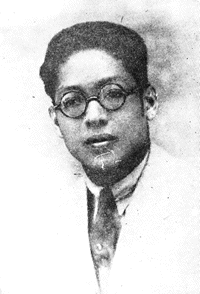4.1.1.29 The cultivation of social poetry in Cuba in the first half of the 20th century

Social poetry in Cuba as such emerged with the publication of Regino Pedroso’s “Fraternal Salutation to the Mechanic’s Workshop”; however, it had some antecedents in the early decades of the century. It would now take shape as a need to bring to poetry a concern that goes beyond individual subjectivity and is inscribed within the problems of everyone, in the context of the difficult political and economic situation.
Heir to avant-garde, the current of social poetry would adopt some of the avant-garde’s own procedures in terms of vocabulary and its recurrence in the theme of machines, but to end up in the working man, in the peasant, in the human being, ultimately, now conditioned by technology but latent behind all the gadgets.
According to Carrera Andrade, “There is no doubt that Hispanic American poets were ahead of other poets in the world—with the exception of the Russians—in incorporating themselves into the popular masses and formulating the message of their pain and their longing.”
In this sense, Cuba was an ideal setting for the emergence of this poetic movement, as the social situation inherent to the island’s neocolonial status, burdened by successive corrupt administrations and political subservience, was truly precarious, demanding a voice that would denounce the state of the population, a song that would invoke the forces of a revolutionary transformation.
In this sense, social poetry developed at the aesthetic antipodes of purism, with a sense of poetic contingency, of the committed role of art, of a function of poetry that could not be merely the timeless and atopic contemplation of an abstract ideal of beauty, which would alienate the poet from his environment, from time, from the sometimes tormented face of reality.
The realism of this worldview of art does not entail a diminution of its connotative content, creative fantasy, and the use of diverse expressive resources. Roberto Fernández Retamar, in addition to the aforementioned poetic avant-garde matrix, also points to Negrismo as its antecedent, taking into account the evolution of some poets, among them Nicolás Guillén, who began with Black sounds and essences to expand the scope of poetic perception to include all neglected social issues, not just Black people or ethnic groups that are commonly victims of discrimination.
This movement would make numerous contributions to our poetry, both ethically and aesthetically, constituting the ideological counterpart to a radically revolutionary thought that shaped and was shaped by the national protest movement unleashed against the Machado dictatorship and the flawed political system on which it was based; an aesthetic and ideological thought that would reach its full realization after the Triumph of the Revolution.








